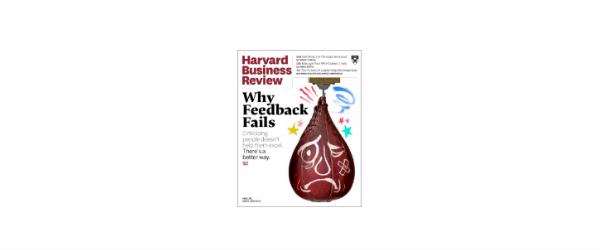The Feedback Fallacy: A Rebuttal

Some of you may have noticed Harvard Business Review’s cover story in the March-April 2019 issue, entitled, “The Feedback Fallacy,” by Marcus Buckingham and Ashley Goodall. This headline certainly captures our attention, which I’m sure was the point.
Considering my recent blog, “Feedback is a Gift,” I felt I should comment on the HBR article.
First of all, I know firsthand from teaching graduate students and coaching clients across many industries and continents, that many managers want to learn how best to give feedback that is objective, meaningful, and actionable, and is delivered in a way that boosts confidence and improves performance.
As Steve Hunt points out in his very excellent response to the HBR article here, not only are there hundreds of studies looking at the impact of feedback on performance, “the overwhelming consensus is feedback improves performance if it is delivered the right way in the right conditions”. That is the reason that leadership development professionals and experts such as David Bradford, Senior Lecturer in Leadership at the Graduate School of Business, Stanford University, study, lecture, and write about how to deliver feedback that creates high performance.
Secondly, the authors’ description of competencies – such as strategic thinking or political savvy – as “abstract” ideas and therefore not able to be assessed by others is simply wrong. A good competency model breaks these competencies into specific skills. For example, a company’s competency model might describe strategic thinking as the ability to view the company at both a macro and micro level; to address change; to have a vision of the future; and to inspire others.
Behaviors can be observed and assessed by an experienced individual, and most certainly it is possible for us to learn from others’ inputs and change our behaviors in the future. For example, a coaching client I worked with was asked to describe how digitalization would impact his business in 10 years. Since he spent his time putting out daily fires, he had no answer. We determined that he needed to schedule time on his calendar to read up on industry trends, talk to experts and anticipate the likely changes in his business. Once he communicated a vision of change, his team launched an exploration of new products and partnerships to be prepared.
Thirdly, despite the attention-getting headline, when they say, “we learn most when someone else pays attention to what’s working within us and asks us to cultivate it intelligently”, it seems that the authors believe in feedback as long as it’s based on understanding only what we do well. It’s true that feedback should address what we do well. By the same token, using a tactful approach such as, “I really found it effective when you did this (something done well)” then adding, “Next time why don’t you try this (presenting a new idea or technique for something to do better or differently).” This brings us back to the idea that there is a right way and a wrong way to deliver feedback. Request a free copy of “The Feedback Formula: 6 Steps for Delivering Honest, Effective Feedback” here.
Finally, when the authors of the HBR article present the idea of expressing our own reaction or feelings to something – like in a statement “I’m struggling to understand your plan” – vs. absolute statements – like “You lack strategic thinking” – this is no different than the technique David Bradford presents to a Stanford audience and excerpted here. As Steve Hunt points out, the authors present techniques for effective feedback as new insight rather than as established and accepted practices.
In conclusion, feedback is not a fallacy. There is a lot of research establishing its value and there are effective techniques for delivering it to improve performance. Great leaders take the time to observe and provide thoughtful feedback to develop future leaders.